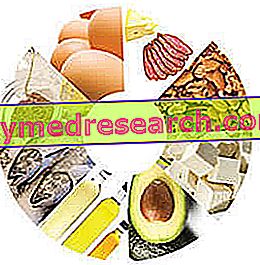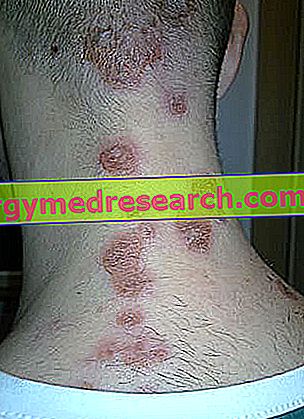What is Robiola?
Generality
Robiola is the name of a group of typical Italian cheeses.
The robiolas are not all the same and are distinguished, among other things, by the type of milk, the exposure to seasoning (possibly, also the duration) and the ripening of the crust, of the superficial mold or of the film.

- Piedmont (especially in the Langhe).
- Lombardy (in particular in the Brescia area).
It is believed that the noun "robiola" derives from the name of a municipality in the province of Pavia: the town of Robbio.
Robiola can be obtained by processing cow, sheep, goat or mixed milk.
Typically with soft dough, these milk coagulates are of no or short seasoning; therefore, they could be classified as dairy products (milk derivatives that contain lactose in significant quantities).
Although limited, the maturation of certain robiolae is sufficient to develop some unique characteristics, such as, for example, the typical reddish surface crust (not surprisingly, some believe that the etiology of the term robiola derives from the Latin "rubrum" = red).
Nutritional Features
Hygienic aspects
As regards the hygienic aspect, the different types of robiola have a rather different risk of pathogenic contamination.
Some show a limited microbiological danger (but still relevant, especially with reference to listeriosis), others are to be avoided in the event of pregnancy (especially those derived from raw milk). In "ripened" robiolas it is always advisable to remove the crust before consumption.
Nutritional aspects
Robiola has a significant energy supply even if, compared to well-seasoned dairy products, it is less caloric.
Calories are supplied mainly by lipids, followed by proteins and finally by carbohydrates.
Fatty acids are mainly saturated, peptides with high biological value (essential amino acids in quantities and ratios similar to human proteins) and simple glucides (lactose).
Robiola brings a more than significant amount of cholesterol; the fibers are absent.
The vitamins present in more appreciable quantities are B2 or riboflavin and retinol equivalents or vitamin A. Small amounts of vitamin E (tocopherols) are shown. With regard to mineral salts, calcium, phosphorus and sodium concentrations are highlighted.
Robiola is one of the most easily contextualizable cheeses in the food therapies of people suffering from metabolic pathologies and / or with a high cardiovascular risk.
Nevertheless, it is necessary to remember that it is a dairy product containing good amounts of saturated fatty acids, cholesterol, salt and calories. It means that the frequency of consumption and the average portion of robiola must be limited in case of hypercholesterolemia, sodium-sensitive and overweight hypertension.
The good concentrations of calcium and phosphorus make the robiola suitable for the feeding of growing subjects and for those with high risk of osteoporosis.
Robiola could be admitted by vegetarian philosophy (provided that, if obtained by adding rennet, this is of vegetable origin). It is to be excluded in the vegan food style.
It is not suitable for the nutrition of subjects suffering from lactose intolerance.
It is gluten-free.
The average portion is about 80-100 g (250-310 kcal).
 | ||
| Chemical composition | Value for 100g | |
| Edible part | 100% | |
| water | 51, 0g | |
| Protein | 18, 9g | |
| Total lipids | 25, 4g | |
| Saturated fatty acids | 16, 07g | |
| Monounsaturated fatty acids | 8, 38g | |
| Polyunsaturated fatty acids | 0, 91g | |
| Cholesterol | 90, 0mg | |
| Carbohydrates available | 2.0g | |
| Starch | 0.0g | |
| Soluble sugars | 2.0g | |
| Total fiber | 0.0g | |
| Soluble fiber | 0.0g | |
| Insoluble fiber | 0.0g | |
| Phytic acid | 0.0g | |
| Alcohol | 0.0g | |
| Power | 311, 3kcal | |
| Sodium | 1110, 0mg | |
| Potassium | 96, 0mg | |
| Iron | 0, 70mg | |
| Football | 704, 0mg | |
| Phosphorus | 374, 0mg | |
| Magnesium | - mg | |
| Zinc | 4, 10mg | |
| Copper | - mg | |
| Selenium | - µg | |
| Thiamine | 0.05 mg | |
| Riboflavin | 0, 24mg | |
| Niacin | 0, 80mg | |
| Vitamin A retinol eq. | 293.0 RAE | |
| C vitamin | 2, 0mg | |
| Vitamin E | 0, 24mg | |
Commodity classification
Based on the product classification of the cheeses, the various robiola could be included in families that are also very different from each other:
- B1: Acid-presamic fresh cheeses (see below).
- B3: Fresh goat or sheep cheeses.
- C1: Soft cheeses without crust.
- C2: Short maturing soft cheeses with crust or thin film.
- C3: Short maturing soft cheeses made from sheep's or goat's milk.
- D2: Cheese with rind with patina.
- D4: Cow's milk cheese with patinated rind.
Geographical differentiation
The most famous robiolas are:
- Piedmontese Robiola : generic term sometimes used to indicate that of Roccaverrano, of the Langhe, etc.
- Robiola delle Langhe (area between Cuneo and Asti, in Piedmont)
- Robiola del Beck (beck means goat in local dialect) 1
- Robiola di Bossolasco (province of Cuneo)
- Robiola di Cocconato (province of Asti)
- Robiola d'Alba (province of Cuneo)
- Robiola di Ceva (province of Cuneo)
- Robiola di Roccaverano (province of Asti) 2
- Robiola di Carmagnola (province of Turin)
- Robiola della Valsassina (province of Lecco)
1 Robiola di Roccaverrano (Piedmont) is made with cow's milk, goat's and sheep's milk, and has the Denomination of Protected Origin (DOP) label.
2 Robiola del Beck is a type of fresh goat cheese produced only in the months of October and November, a period in which goats prepare for mating.
Robiola di Roccaverano
As anticipated, the robiola di Roccaverano is a PDO cheese with geographical delimitation referring to the province of Asti.
It is produced from mixed milk, raw or pasteurized,
- cow that should not exceed 85%
- and goat or sheep that must not be less than 1%.
The rennet used is liquid and the acid-rennet coagulation.
The Roccaverano robiola has a cylindrical appearance, with a variable diameter between 10-14 cm. The barefoot is 4-5 cm. The average weight varies between 250-400 g.
The crust is absent, the dough is soft and white.
Roccaverano robiola belongs to the C3 product family but uses the acid-rennet coagulation typical of class B1.
Curiosity
What does acid-rennet coagulation mean?
In cheesemaking there are two types of coagulation of milk casein proteins: acid and rennet.
- The first is given by the bacterial fermentation of milk with the production of lactic acid and reduction of the pH that coagulates the caseins.
- The second is caused by the addition of rennet to milk at a temperature of 30-37 ° C, which exerts an enzymatic action of coagulation of caseins.
The acid rind includes both the first and the second coagulation phenomenon.
Bibliography:
- Cheese Atlas - Giorgio Ottogalli - Hoepli - page 156; 203; 356.



